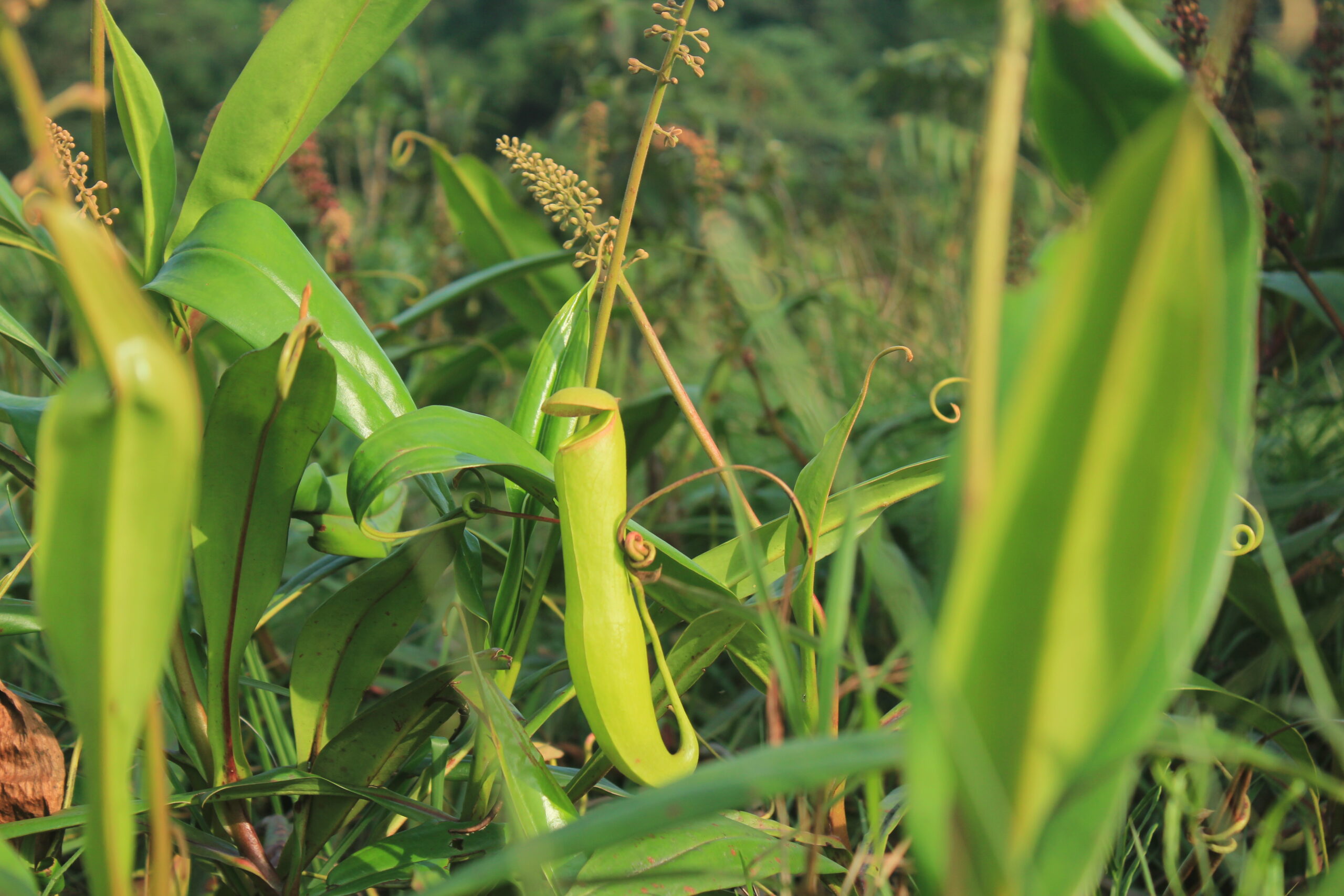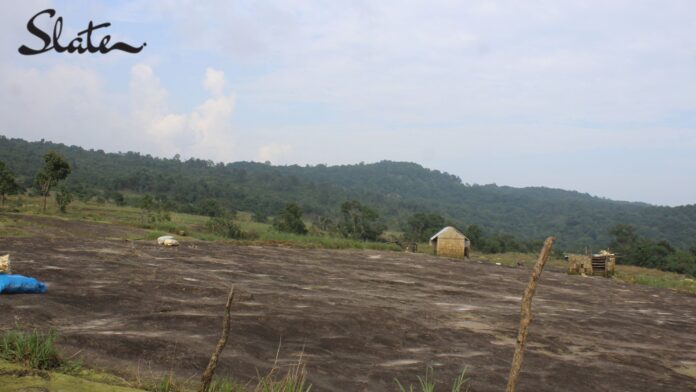By Jyoti Bania
The Mawsynram plateau in East Khasi Hills is heartbreakingly beautiful and wondrous. The weather of this region is so unpredictable there is a saying that one may experience four seasons (rain, sun, clouds and cold) on the same day.
En route to Mawsynram, there is a prominent hill – this famous landmark is called Lum Symper (In Khasi, Lum means ‘peak’). A popular Khasi folk tale tells the story of a fight between Symper and Kyllang, said to be brothers, and whose battles are narrated in Khasi legends.
A narrow winding road snakes through the side of the mountain ridge and then spirals up to Mawsynram. This place is very often covered in clouds, providing a spectacular view.
Travelling to this place is a thrilling experience, particularly on low-visibility days.
An opening on the mountain ridge is the Gateway to the Mawsynram plateau. Passing through the gateway, this plateau appears closer and the conical top of the church is visible amid the clouds. From here on, towards the south of Mawsynram, a road leads you down to the Mawlyngbna village, located around 16-17 km away from Mawsynram. Here lies the fossil park.
Located near the Mawlyngbna Village, a nature trail passes through scenic forests and a beautiful waterfall, along with a small hanging bridge. After crossing the bridge, green rock stairs lead you up to a wide spread-out flat grassland. The landscape of this area seems to be an alien space.
This is the Fossil Park – a time capsule that provides information about the history of life on earth. It provides realistic evidence of the region’s underwater history that dates back millions of years. The park is known to have fossils of different sea creatures – crustaceans, molluscs and starfish-shaped creatures can be seen here – and there is evidence of marine fossils embedded in rocks.
The landscape is covered by thin layers of soil over which the green spiky grass spreads over the surface. Rugged rock surfaces are also visible. Overall, walking on this flatland that used to be a seabed for millions of years, is a rare experience.
Starfish embedded into the rocks is clearly visible here. It must be noted that many fossils are either degraded or eroded for various reasons. Of these, intense sun rays, heavy rains, and human activity are to be blamed.
I’ve witnessed how the local communities have played significant roles in the conservation of fossil sites. They protect marine fossils by placing flat loose rocks over them to protect them from erosion and degradation from the sun and heavy rains. However, in my opinion, this is not enough to protect and preserve these fossils.
The fossil park is really a natural museum and is also home to India’s only pitcher plant.

A brief description of the Pitcher Plants on the Flowers of India website read as:
Indian Pitcher Plant is a carnivorous plant endemic to the Khasi Hills of Meghalaya, after which it is named. The species has a very localised distribution and is critically endangered. The Khasi people call the plant Tiew-Rakot, which means “demon-flower” or devouring plant. The plant has long, oblong-lance-shaped leaves. Some unusual leaves first look like normal leaves, then develop a tendril at their tip, and finally, the tip of the tendril develops an amazing pitcher, with a lid on top. As the pitcher matures, the lid turns a reddish hue. When an insect goes inside, the lid closes, and the insect is eventually digested. This is believed to be the only species of Pitcher Plant found in India.
Similarly, the Forest department of Meghalaya remarks,
The only pitcher plant found in India and is endemic to Meghalaya. It is a straggling scandent insectivorous shrub growing in the undisturbed sub-tropical and tropical forests of the State at elevations ranging from 1000 to 1500 meters MSL.
The critically endangered pitcher plant is placed under the International Union for Conservation of Nature (IUCN) category and is also protected under schedule VI of the Wildlife Protection Act, 1972.
This plant has several medicinal uses. According to the Forest Department of Meghalaya, “The fluid in the unopened pitcher is used to treat eye, digestive and urinary ailments; for diabetes. The pitcher with its content is made into a paste and applied on affected parts of leprosy patients.”
Considering that the natural (and by extension, the cultural) heritage with outstanding universal value is increasingly threatened with destruction and deterioration, the General Conference of UNESCO, on 16 November 1972, adopted the “Convention Concerning the Protection of the World Cultural and Natural Heritage” with a purpose of: “establishing an effective system of collective protection of the cultural and natural heritage of outstanding universal value, organised on a permanent basis and in accordance with modern scientific methods”
Article 2 of this Convention states that the following shall be defined as natural heritage:
“Natural features consisting of physical and biological formations or groups of such formations, which are of outstanding universal value from the aesthetic or scientific point of view;
Geological and physiographical formations and precisely delineated areas which constitute the habitat of threatened species of animals and plants of outstanding universal value from the point of view of science or conservation;
Natural sites or precisely delineated natural areas of outstanding universal value from the point of view of science, conservation or natural beauty.”
Indeed, the Fossil Park of Mawlyngbna, Mawsynram – with its embedded ancient marine fossils that date back to the underwater history of the region and India’s only pitcher plant – deserves to be declared a “natural heritage” for its collective protection from deterioration, degradation and eventual extinction.
(The writer is a contributor to The Meghalayan)


